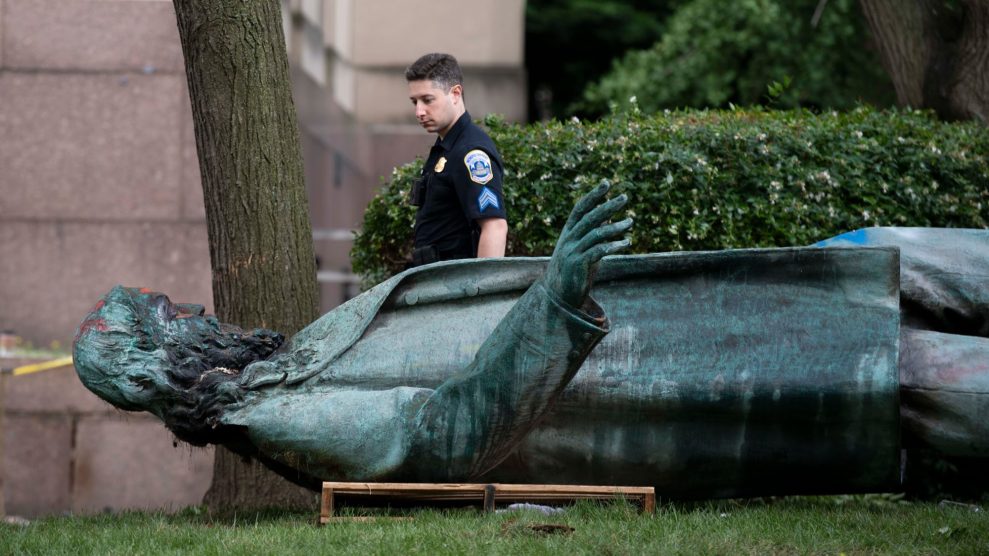
The National Park Service (NPS) announced on Monday that the statue of Confederate General Albert Pike will be restored and reinstalled in Washington, DC, months after it was toppled by protesters during the demonstrations in June 2020 following the murder of George Floyd. The decision has drawn criticism from various quarters, marking another chapter in the ongoing debate over how the United States remembers its historical figures.
The statue of Pike, which had stood in Judiciary Square since its installation in 1898, was removed amid a nationwide reassessment of monuments honoring Confederate figures. According to the NPS, the restoration is part of President Donald Trump‘s executive orders aimed at “Making the District of Columbia Safe and Beautiful” and “Restoring Truth and Sanity to American History.” The NPS stated that the statue is currently undergoing restoration and is expected to be reinstalled by October 2023.
While the NPS framed the statue’s reinstatement as a tribute to Pike’s “leadership in Freemasonry,” it did not address his controversial legacy. Pike was a general for the Confederate States of America, an organization that fought to preserve slavery, and has been linked to the Ku Klux Klan in its early years. Historical accounts reveal that he commanded Native American troops in an 1862 battle where at least eight Union soldiers were scalped.
The decision to restore the statue has prompted backlash from local leaders. Eleanor Holmes Norton, DC’s non-voting Democratic delegate to Congress, announced plans to reintroduce a bill aimed at permanently removing the statue. In a statement, she emphasized the moral implications of honoring a figure associated with racism and treason. “A statue honoring a racist and a traitor has no place on the streets of DC,” she remarked.
This move to reinstall the Pike statue is part of a broader trend as the Trump administration seeks to reshape perceptions of American history. The Southern Poverty Law Center (SPLC) reported in a 2021 survey that nearly 100 Confederate monuments were removed in 2020, while over 680 remain in public spaces today. The SPLC’s findings reflect a significant shift in public sentiment, particularly regarding symbols associated with America’s legacy of slavery.
The announcement has also reignited discussions around the Smithsonian Institution, which Trump criticized for allegedly promoting a “divisive, race-centered ideology.” Recent changes to exhibits at the National Museum of American History, including the removal of references to Trump’s impeachments, have raised eyebrows about the influence of political narratives on historical representation.
As the restoration of the Pike statue looms, it raises questions about the future of Confederate monuments and their place in American society. The NPS has yet to disclose the financial details surrounding the restoration effort, which will likely be scrutinized by those opposed to Pike’s legacy.
In addition to the statue issue, Trump’s administration has sought to make changes to the landscape of Washington, DC, with proposals to rename local landmarks in his honor. This effort aligns with a broader ambition to foster a version of American history that aligns with Trump’s vision of a unified, unblemished past.
The decision to restore the Albert Pike statue serves as a poignant reminder of the ongoing cultural and political battles over how history is remembered and honored in the United States. As the country grapples with its complex past, the implications of such actions extend far beyond the reinstallation of a statue, reflecting deep societal divisions that continue to shape public discourse.







